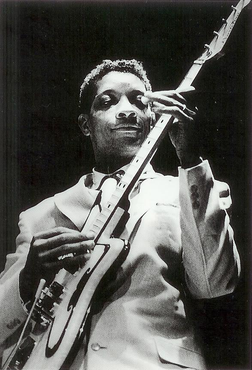By Richard Casey
In the summer of 1969, I attended a blues concert featuring Howlin' Wolf and Muddy Waters in Buffalo, New York. After the show, I gained access to backstage by waving a bag of Moroccan hash, which I generously shared with everyone.
Wolf autographed my draft card -- I regret that I burned it a few months later -- and I talked for a while with Hubert Sumlin, his guitar player. Hubert's playing wasn't flashy or fast, but exactly right for Wolf. It went together with a rough beauty that still knocks me out.
Hubert gave me some advice seemingly unrelated to the conversation. (Maybe it was the hash?) He said, “Study the book." I later puzzled over what he meant. Which book? The Bible? Books in general?
Since then, I've played in a lot of amateur rock bands: pickup groups, dads' bands, block-party get-togethers. Most rock musicians of my age don't know much theory. They don't have to: The music is simple enough to figure out by ear. They play what sounds good.
I am not a natural musician. I don't have an intuitive feel for it, can't hear things that real musicians can. So I've had to study it, from Mel Bay's "Guitar Chords" through “The Beatles As Musicians" Vols. 1 and 2, and “The Heavy Guitar Bible." I even own Slonimsky's "Thesaurus of Scales and Melodic Patterns." I know way more theory than most people like me whose repertoire consists mainly of three chords played badly.
My friend Bob, a guitar player who can lay down riffs and melodic lead lines with metronomic precision, will sometimes turn to me and ask, “What key are we in?"
And I'll know. I studied the book.
Go with God, Hubert Sumlin.
* * *
Richard Casey is the director of Hellbent, Horror House on Highway 5 and the upcoming Horror House on Highway 6.

